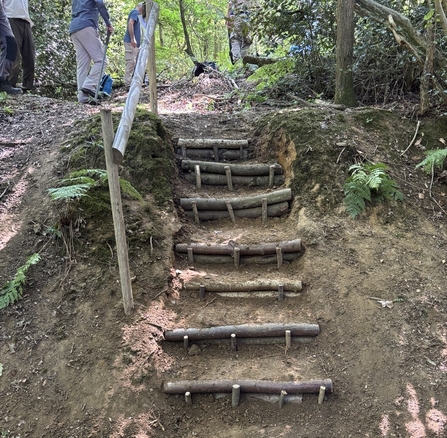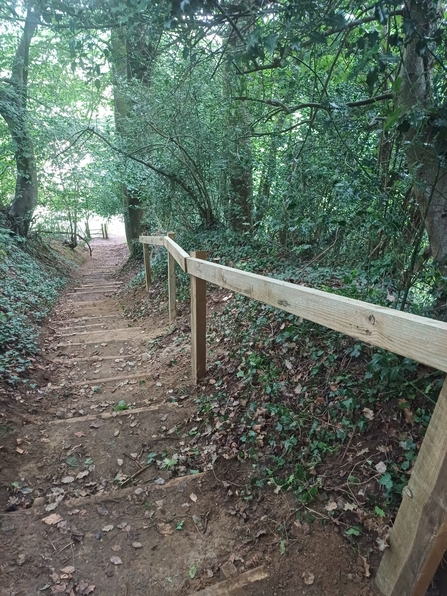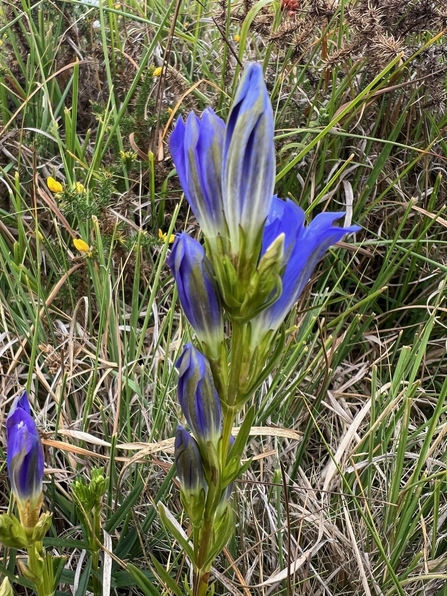It's been a busy summer of volunteering on our nature reserves!
In the East of the county, our practical conservation volunteers have been busy with a range of tasks including path clearance, coppice fencing, step creation, invasive plant species control and spillway clearance. Volunteers spent time at Quarry Hanger installing a shiny new gate, carefully ensuring that it was perfectly level and drilling in new fittings to hold it together. This solid craftmanship will now ensure there will be no escaping cows whey they come to graze the chalk grassland soon!
Our new 171 hectare farm site in Farleigh, Elm Farm, received the attention of our volunteers who spent four hot and sunny days on site pulling ragwort from areas of the meadows ready to be cut for hay for our resident cattle during the winter months. Whilst ragwort is an important species for invertebrates, it is poisonous to livestock if it ends up in their hay and so needs to be removed in certain areas. Elm Farm will provide much-needed additional layback facility with grazing land and farmhouse facilities to house the animals when they aren't keeping vegetation under control on our reserves. This time spent by our volunteers getting the site up and ready for our livestock is a huge boost to our conservation grazing operations, helping to maintain biodiversity in globally important grasslands and heathlands.
Additionally, at Graeme Hendry Woods, volunteers helped create a brand new butterfly transect within this beautiful woodland. They created steps using materials scavenged from within the woods, including sweet chestnut logs from a coppicing session last winter. Thanks to the work of our volunteers, we can now allow members of the public to walk our butterfly transect throughout summer and contribute to biological records.




